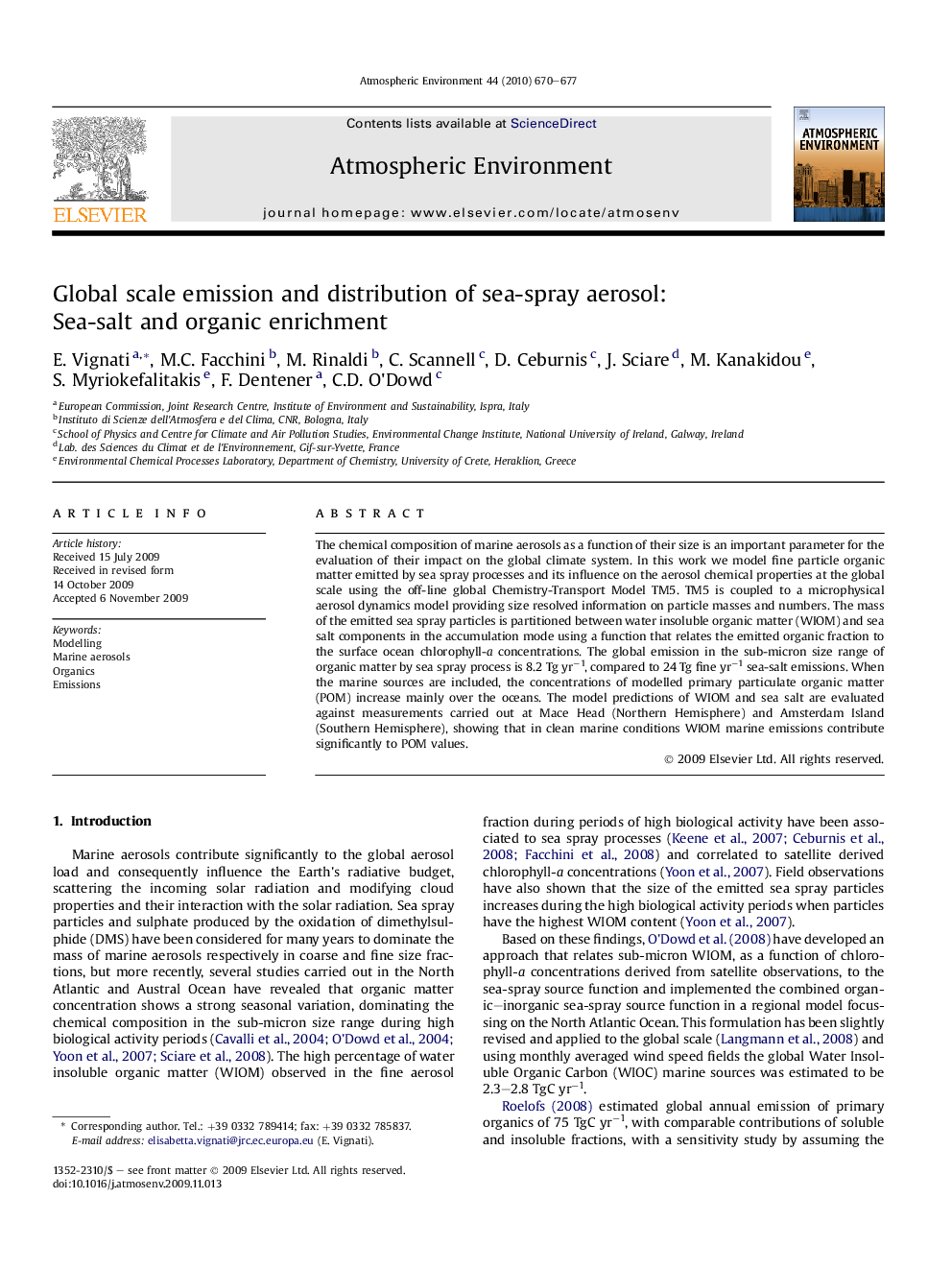| Article ID | Journal | Published Year | Pages | File Type |
|---|---|---|---|---|
| 4441243 | Atmospheric Environment | 2010 | 8 Pages |
The chemical composition of marine aerosols as a function of their size is an important parameter for the evaluation of their impact on the global climate system. In this work we model fine particle organic matter emitted by sea spray processes and its influence on the aerosol chemical properties at the global scale using the off-line global Chemistry-Transport Model TM5. TM5 is coupled to a microphysical aerosol dynamics model providing size resolved information on particle masses and numbers. The mass of the emitted sea spray particles is partitioned between water insoluble organic matter (WIOM) and sea salt components in the accumulation mode using a function that relates the emitted organic fraction to the surface ocean chlorophyll-a concentrations. The global emission in the sub-micron size range of organic matter by sea spray process is 8.2 Tg yr−1, compared to 24 Tg fine yr−1 sea-salt emissions. When the marine sources are included, the concentrations of modelled primary particulate organic matter (POM) increase mainly over the oceans. The model predictions of WIOM and sea salt are evaluated against measurements carried out at Mace Head (Northern Hemisphere) and Amsterdam Island (Southern Hemisphere), showing that in clean marine conditions WIOM marine emissions contribute significantly to POM values.
